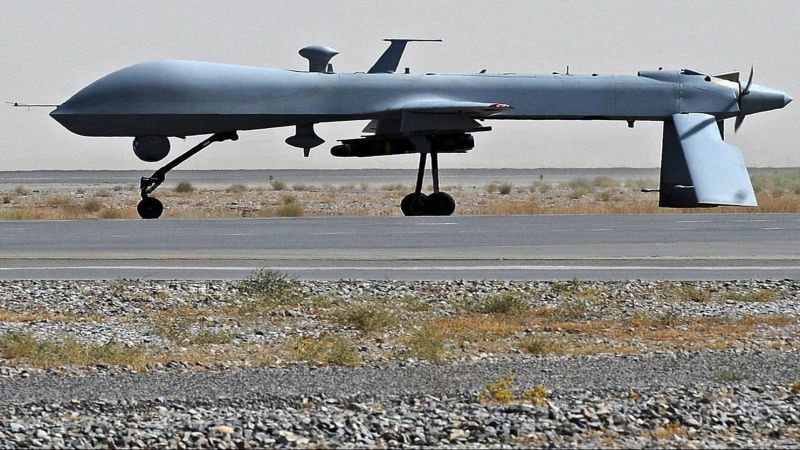
By Greg Jaffe
The Trump administration has chosen to ignore an executive order that requires the White House to issue an annual report on the number of civilians and enemy fighters killed by American counterterrorism strikes.
The mandate for the report, which was due May 1, was established by former president Barack Obama in 2016 as part of a broader effort to lift the veil of secrecy surrounding drone operations in places such as Yemen, Somalia and Libya. The White House has not formally rescinded the Obama-era executive order but has chosen not to comply with some aspects of it.
“The executive order that requires the civilian casualty report is under review” and could be “modified” or “rescinded,” a White House spokesman said. The White House declined to say who is conducting the review, how long it has been ongoing and when it is expected to be completed.
The decision on the civilian casualty report is part of a broader shift in U.S. counterterrorism policy to withhold more information about U.S. drone strikes and the rules governing them, reversing Obama-era policies dating to 2013.
At the time, Obama sought to impose restrictions on drone strikes that allowed the United States to kill enemy fighters almost anywhere in the world without putting U.S. personnel at risk.
“The same human progress that gives us the technology to strike half a world away also demands the discipline to constrain that power or risk abusing it,” Obama said in 2013 when he announced new rules of engagement governing drone operations.
The Obama-era rules required “near certainty” that civilian bystanders would not be harmed in the strikes and mandated that the targeted militants pose a “continuing and imminent threat” to Americans. The tougher standards did not apply to areas such as Iraq, Afghanistan or Syria where U.S. troops were involved in regular combat.
Trump is reported to have relaxed the latter requirement last summer, but his administration has not publicly acknowledged the change. “There is no change to the U.S. commitment to protecting civilian life,” said the White House spokesman, who was authorized to speak only on the condition of anonymity.
A separate requirement, imposed as part of last year’s defense budget, requires the Pentagon to submit to Congress by May 1 a list of all U.S. military operations that caused civilian deaths. The Pentagon plans to deliver the report to Congress by June 1, or one month behind schedule, a Pentagon spokesman said late Tuesday after the May 1 deadline had expired.
Former U.S. counterterrorism officials expressed surprise at the Trump administration’s failure to deliver either report on time. “It is pretty remarkable that they would simply ignore an executive order that remains on the books and also a statutory requirement passed by Congress,” said Joshua Geltzer, a visiting law professor at Georgetown University and former senior counterterrorism official in the Obama administration. “That is just bad governance.”
The first report on casualties caused by counterterrorism strikes was released in July 2016 and disclosed up to 116 civilian casualties during seven years of strikes. The report was criticized by independent groups, such as the New America Foundation and the Bureau of Investigative Journalism, which estimated between 200 and 325 civilian deaths over a similar period. Just before Obama left office in early 2017, the administration released a second report that disclosed the deaths of 441 fighters and one civilian in 2016.
Even though the White House refused to release numbers, a spokesman wrote in an email that there was no increase in civilian casualties in 2017.
But counterterrorism experts cast doubt on that assertion, noting that there was a big surge in drone strikes in 2017, especially in Yemen, where the United States launched 127 strikes, up from 32 in 2016.
“It’s almost impossible to claim that there has been no increase in civilian casualties,” said Luke Hartig, a fellow at New America specializing in counterterrorism. “It’s hard to look at what we know from public reporting — both the increase in total strikes and reports of civilian casualties — and say that nothing has changed.”
The Obama administration sold its efforts as transparency to build support for U.S. drone operations at home and overseas. “Nobody wants to have a foreign power dropping bombs in their country and so the United States has to explain its rationale and own up to the results,” Hartig said.
Last year, for example, the U.S. military said as many as a dozen civilians were killed in a Navy SEAL counterterrorism raid, executed shortly after Trump took office. Other groups estimated that as many as 25 civilians were killed. In Somalia and Yemen, the Bureau of Investigative Journalism estimated that 30 to 40 civilians were killed in U.S. airstrikes and counterterrorism raids in 2017.
By disclosing strikes and civilian casualties, U.S. officials hoped to demonstrate that its strikes were far more precise than estimates by outside groups. “There was a recognition that the use of armed drones was a counterterrorism tool that we would have to rely on for a while and that to preserve it, there had to be greater trust,” Geltzer said. “The goal was to shed light on what was happening and debunk some of the myths surrounding the campaign.”
Source: The Washington Post, Edited by Website Team